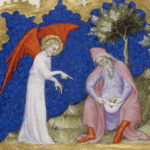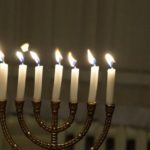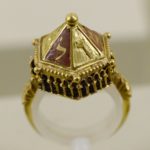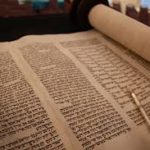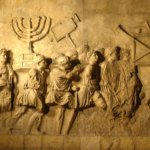Spiritual concepts can sometimes be tricky to explain, but here goes…
The Ten Emanations, also known as the 10 sefirot of the Tree of Life configuration is one of the primary symbols of Kabbalah. The 10 sefirot embody the ten archetypal energies or forces that G-d used to create the universe and the existence of life, which continuously guide and animate each. In Jewish mysticism, it’s said that the ten sefirot are actually curtains (or levels) between us (humanity)and the Light Power, Energy, and Force of G-d. Humanity is said to rest at the tree’s lowest point (the sphere is known as Malchut), whereas the Light of G-d is (naturally) situated at the highest sphere, extending even beyond this. One significant Kabbalistic conceptualization identified the ten sefirot as the ten original sayings that G-d uttered to create the world.
[Note: Some Kabbalistic schools of thought identify an eleventh sphere called Da’at. This sefirah is not always present in the configuration of the tree. I hope to address this in another installment.]
The 10 sefirot
Moreover, the 10 sefirot are believed to represent the levels that G-d’s Power has to travel down to reach us. And, it’s said that this is a part of G-d’s mercy: if we were to come into contact with the full brunt of the Power of the Light or Lightforce of our Creator we would be annihilated instantly.
The ten sefirot most closely resemble attributes or traits of G-d rather than being a concise depiction. And also, they are interrelated, so not one of them functions independent of the others. To me this powerfully illustrates the concept that G-d is One.
Symbolism of Sefirah
What’s more, each sefirah is symbolic of and corresponds to a part of the human body, further illustrating the belief that man is created in the image (or tzelem semblance) of G-d. One thing we should carefully consider is this: what is really meant by the term image?
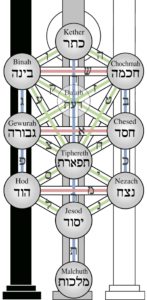 According to a man named Moses ben Jacob Cordovero, aka the RaMaK, the imitation of G-d is one way to discover the true meaning of the phrase, “made in His image.” Rabbi Moses Cordovero was one of the greatest Kabbalists of the 16th century Safed, Israel, and one of the greatest mystical thinkers of his time. He founded the Kabbalah academy in Safed around 1550, and was its leader until his death at the age of 48. In the most famous of his seforim (books), entitled Tamar Devorah (The Palm Tree of Deborah), he explains that the Creation (humanity) should always seek to imitate its Creator (G-d) in a manner that includes both likeness (image) and deeds (behavior). He stated that the most important and highest of these two concepts is that of deeds. Our behavior is key in bringing us closer to G-d.
According to a man named Moses ben Jacob Cordovero, aka the RaMaK, the imitation of G-d is one way to discover the true meaning of the phrase, “made in His image.” Rabbi Moses Cordovero was one of the greatest Kabbalists of the 16th century Safed, Israel, and one of the greatest mystical thinkers of his time. He founded the Kabbalah academy in Safed around 1550, and was its leader until his death at the age of 48. In the most famous of his seforim (books), entitled Tamar Devorah (The Palm Tree of Deborah), he explains that the Creation (humanity) should always seek to imitate its Creator (G-d) in a manner that includes both likeness (image) and deeds (behavior). He stated that the most important and highest of these two concepts is that of deeds. Our behavior is key in bringing us closer to G-d.
Often his writings, the RaMAk refer to these attributes in such a way that one may come to the conclusion that they signify G-d’s internal aspects.
Also according to Kabbalah, there is the belief that the Patriarchs (and Matriarchs) of the Torah/OT(in particular, Abraham, Isaac, and Jacob) were the physical, earthbound archetypes for certain of G-d’s aspects. The sefirah called Chesed (Mercy) was represented by Abraham. The sefirah known as Gevurah (Severity or Judgment) was represented by Isaac. And, the sefirah of Tiferet (Beauty and Balance) was best represented by Jacob. On a side note, Jacob, being the third in the hierarchical line, was in truth a balance of his grandfather, Abraham and his father, Isaac. He was said to represent the middle pillar of the tree of life, hence he was a balance of both Mercy and Judgment.


